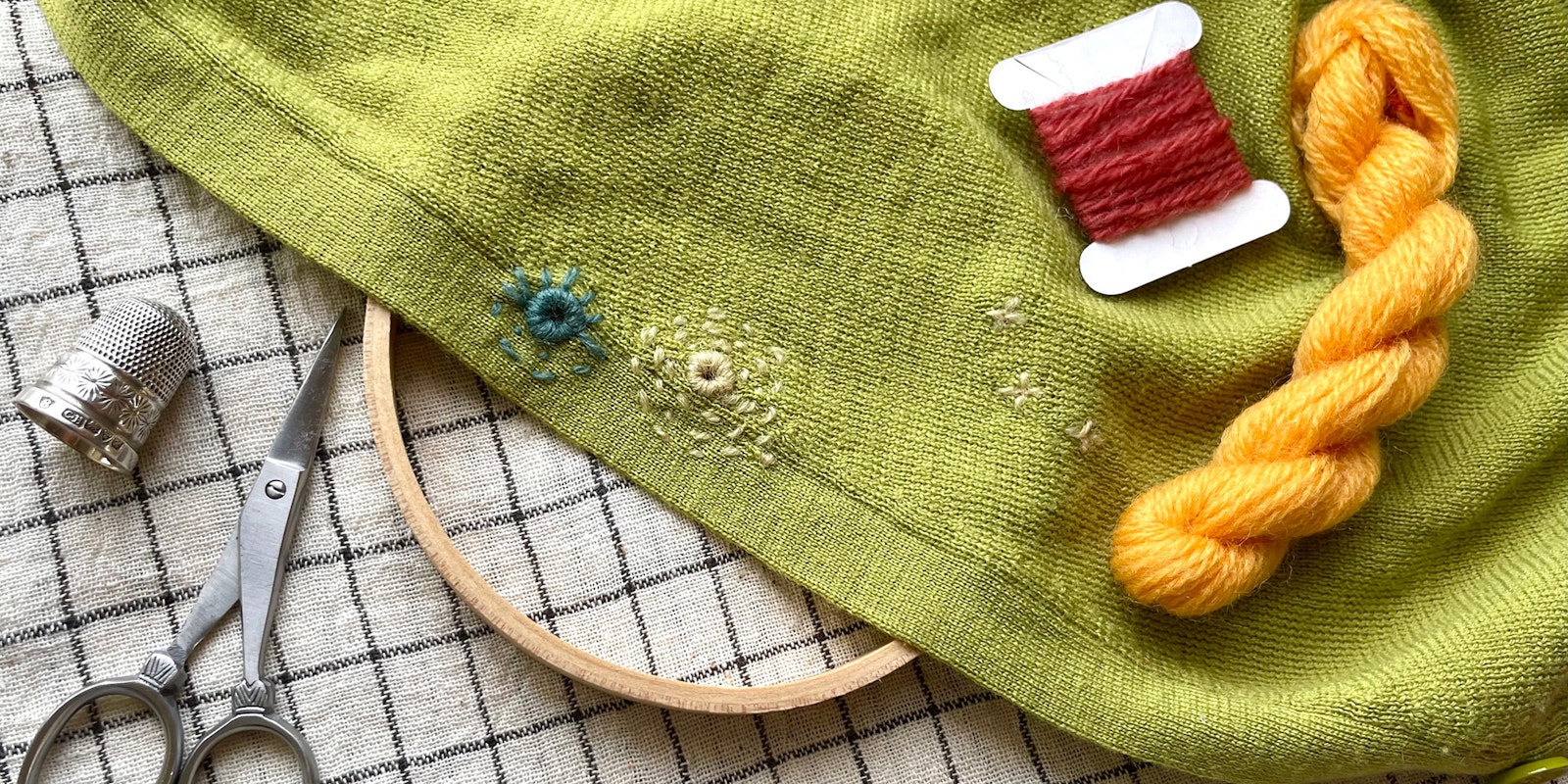Contents
For me, sitting down to mend a small hole in a sweater or reinforce the heel of a sock feels like a breath of fresh air. A hot cup of tea. A good laugh on a dreary day. The few moments of focus and care and creativity might be fleeting, but the results are tangible and lasting. And mending with my handspun makes me feel like I’ve stitched a bit of myself into the textiles that surround me.
This isn’t to say that I always found darning and patching to be fast or fun. There was a time when I loved the idea of mending, but it felt complicated and fussy. Once I realized that much of my reluctance was worry that I would “do it wrong,” I had to laugh. An unwearable sweater will not be devalued by an imperfect mend! These skills take practice, like everything else. I encourage you to use a bit of time, a few loose ends of handspun, and a little patience with the learning process as you leave your maker’s marks.
Today’s Skill Guide will give you a solid foundation. Every item we’ve selected for this guide is part of your All Access program and will help you get the most out of your subscription. Check out the Spin Off Library and our video course website for more learning opportunities.
Cheers!
—Kate Larson
Why Should Spinners Mend?
Socks, scarves, jeans, sweaters . . . there is always work to be done. Mending is on-trend, and spinners have it covered. You may have a favorite mending method for extending the life of handspun socks, for stitching worn spots in a beloved scarf, or for revitalizing sweaters with glorious handspun patches. Mending can allow you to cover a weak or broken place in your favorite fabrics or, alternatively, to embellish and cherish them.
 Small bits of handspun are all you need to add a pop of color in your mends. Photo by George Boe
Small bits of handspun are all you need to add a pop of color in your mends. Photo by George Boe
One of the most important pieces of advice I can offer is to mend knitted fabrics before they develop holes from wear (such as on sweater elbows) or as soon as you find a hole (such as from moth damage). Mending while the fabric is still intact and unstretched is faster and easier, and it leads to neater mends.
Duplicate Stitch Tutorial
Follow Kate’s steps below for mending your handknits using a bit of your handspun yarn.
Duplicate stitch, also known as Swiss darning, is one of the easiest mending techniques to learn and one that you’ll use often if your life is full of knitted fabrics—handmade or otherwise. The technique is essentially working a new yarn over the top of a row of knitted stitches, which is how it earned the name duplicate stitch.
Steps to follow
Begin by securing your knitted fabric over a darning form. I’m using a darning mushroom that is fairly flat on top, but you could use an apple or something similar. Secure with a ribbon or elastic so the fabric is stable but not stretched.
 Photos by Matt Graves
Photos by Matt Graves
Step 1: Insert the needle a few inches from where you intend to begin your mend. Bring the needle point

